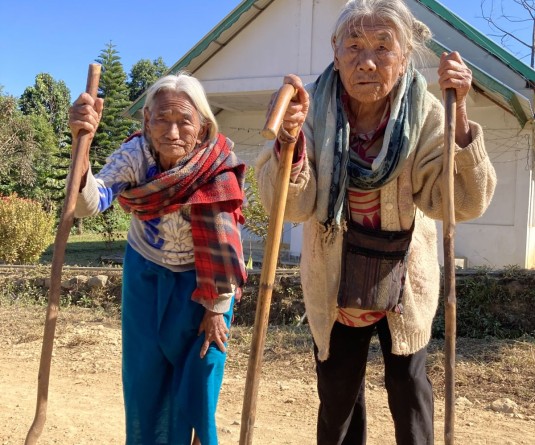
KesinoThorie
Livestock sector plays a pivotal role in the Indian rural economy. The annual contribution of livestock sector in our country to the total GDP is 4.11% and 25.6% to the total agricultural GDP but compared of its contribution in the Indian economy, the livestock sector has received much less resources and institutional support and the livestock extension remains grossly neglected.
The livestock owners in India, majority of whom are small farmers, have traditionally acquired the knowledge about animal husbandry from their elders. Under the ever changing social, economical, technological and market condition, it is our duty to continuously update their skills so that they can earn a sizeable amount from their livestock enterprise.
The livestock extension education plays an important role to empower the farmers with appropriate technological knowledge and skills through various extension education and training programmes for improving livestock farming methods and techniques, increasing the livestock production efficiency and income and stepping up the level of living and elevating the social and educational standards of rural life.
National Livestock Mission (NLM) is an important rural development programme initiated under the Twelfth Five-Year Plan.
National Livestock Mission (NLM): This scheme was implemented since 2014-15. This mission is designed to cover all the activities required to ensure qualitative and quantitative improvement in livestock production systems and capacity building of all stakeholder and is formulated with the main objective of achieving sustainable development and growth of livestock sector. The following are the sub - missions of NLM:
i. Sub-Mission on Livestock Development - to address the concerns for overall development of livestock species.
ii. Sub-Mission on Pig Development in North Eastern Region (NER) - wherein the Government of India would support the State Piggery Farms and importation of germplasm to improve pig production in the country and providing protein rich food in these states.
iii. Sub-Mission on Feed and Fodder Development - substantially reduce the gap between availability and demand.
iv. Sub-Mission on Skill Development, Technology Transfer and Extension - enable a wider outreach to the farmers and to avail the benefits of the multiple components and the flexibility of choosing the new technologies and practices under NLM for a sustainable livestock development.
Piggery Development in North Eastern Region (NER) of India
The North Eastern region of India comprises of eight states namely Arunachal Pradesh, Assam, Manipur, Meghalaya, Mizoram, Nagaland, Sikkim and Tripura. Pig is an animal of choice for meat especially to the tribal population in North Eastern India as pig rearing is considered to be the most encouraging and appropriate livestock enterprise to narrow down the gap between the availability and requirement of animal meat in this part of the country and it constitutes about 28% of the country’s pig population.
Nagaland: The Department of Animal Husbandry and Veterinary Services under National Livestock Mission aims to strengthen two State Piggery Farms at Tuensang and Wokha.
Assam: Under the National Livestock Mission, a total of fourteen Pig Breeding Farms under the Department were strengthened which includes one Base Pig Breeding Farm and thirteen Multiplication Breeding Farm.
Mizoram: A State Pig Breeding Farm is strengthened at Thingdawl and a Pig Breeding Farm at Lungpuizawl under the sub-mission of Pig Development in NER of National Livestock Mission.
Manipur: There are two District Piggery Farms located at Torbung, Churachandpur District and Tarungpokpi, Bishnupur District.
Meghalaya: The Regional Pig Breeding Farm at Kyrdemkulai aims to supply improved breeding stock to the Government Pig Farms for multiplication to meet the requirement of breeding stock in the state.
The NER is predominantly concentrated with non descript pig populations. However pig is one of the most efficient feed converting animals with shorter generation interval, high prolificacy and faster growth rate and hence this can be improved by importing germplasm to enhance pig production and providing protein rich food in these states.
The writer is a 3rd Year, BVSc& AH, College of Veterinary Science, AAU, Khanapara, Guwahati, Assam




